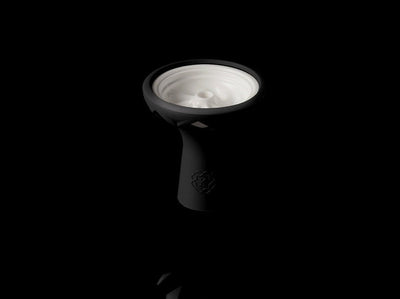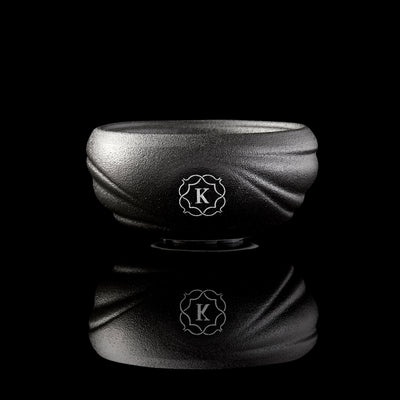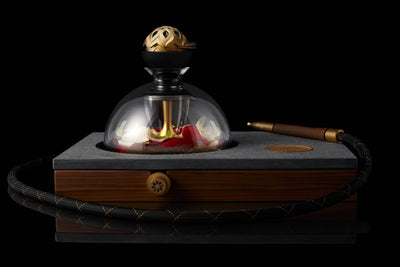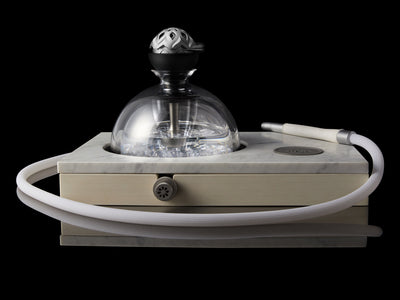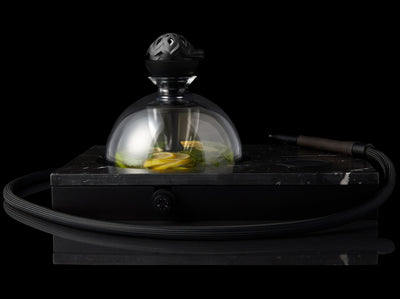
The Art and Craft Behind Classical Hookah Design and Manufacturing: An In-depth Look at How They're Made
From its roots in ancient India and Persia to its widespread popularity across the globe today, the hookah, also known as shisha, nargile, or waterpipe, has a long and vibrant history.
Behind the scenes of its distinctive, flavorful clouds of smoke is an art form that celebrates craftsmanship, tradition, and cultural richness. While Kaloud doesn’t make classical style Hookahs, we definitely appreciate the history of this wonderful tradition we all share, so let's dive into the truly fascinating world of how classical hookahs are made.
Understanding the Components of a Hookah
To appreciate the craftsmanship involved in creating a hookah, we first need to understand its key components:
- Bowl: This is where the tobacco, or tobacco alternative, is placed. Hookah bowls are typically made of clay, metal, marble, or glass. The best ones will be easy to clean, or alternatively, they will be used for specific flavors as opposed to all flavors. For example, a bowl dedicated to grape based mixes, or one dedicated to paan flavored mixes, since the flavors in bowls can sometimes “ghost” or leave a residual flavor that is then transferred to the next series of sessions.
- Stem: This is the long pipe that the smoke travels down. Hookah down stems are usually made from brass, aluminum, copper, or stainless steel, but there are some hookahs that have down stems made of wood. Although wooden downstems are beautiful, they are not ideal since the wood can, if not cleaned properly, become a breeding ground for mold or other harmful things.
- Base: The large glass, clay, plastic, or metal container at the bottom, filled with water, which cools and humidifies the smoke. The best bases will be easy to handle and, in the unfortunate event it breaks, easy to replace. In some cases, a broken base will render a classical hookah completely unusable, so this is important to keep in mind if the Hookah will be used for more than decorative purposes.
- Hose: Through this, users inhale the smoke. Hookah hoses can be made from a variety of materials, including leather and synthetic materials. When selecting a hose it is important to consider how easy it will be to clean and also to make sure that the material it is made of won’t flake off and release small particles into the smoke which are then inhaled. Hoses made of rubber, low grade silicone, and leather can all have problems in this regard, so be alert when selecting your hose.
Each of these components plays a crucial role in the smoking experience and is a testament to the skill of the craftspeople involved.
The Art of Making a Hookah Bowl
The process starts with the bowl, often handcrafted by experienced potters. Clay is the traditional material of choice, valued for its heat resistance and durability. The clay is molded into the desired shape, then dried, and finally baked in a kiln. Some modern variations use silicone, metal, glass, or hybrids, which are blown or cast into the required shape, offering different aesthetic and functional attributes. Depending on whether the bowl is glazed or not, it will be easy to clean or better as a designated flavor bowl.
Crafting the Stem and Hose
The stem, often a stunning showcase of metalwork, demands precision. Brass or stainless steel is the preferred material, both for their longevity and their resistance to rust. The metal is carefully cut, shaped, and sometimes engraved with intricate designs that reflect the hookah’s cultural origins. The hose, traditionally made of leather or woven fabric, has evolved with time. Today, many are made from silicone or other synthetic materials for hygiene and durability reasons. The flexibility and length of the hose are critical factors, as they directly impact the comfort of the user. Additionally, many users now use personal or disposable hookah hose tips for hygiene.
The Beauty of the Base
The base, or the body of the hookah, is typically made from hand-blown glass. This involves heating a glass tube and then shaping it using tools and movements that have been passed down through generations. This process allows for a wide array of colors, patterns, and shapes, making each hookah base a unique work of art. After the base is blown and shaped, it is left to cool slowly to avoid any sudden temperature changes, which could cause the glass to crack. The final touch often involves painting or etching elaborate designs onto the surface.
Assembly and Quality Check
Once the individual parts are crafted to perfection, they are assembled to create the final product. This involves fitting the stem into the base, attaching the hose, and placing the bowl on top. Quality control is a significant aspect of the process. The hookah must be completely airtight to ensure smooth airflow, and all the parts should fit together seamlessly. A thorough check is carried out, often involving a test smoke, to ensure everything is in order before the hookah is ready for sale.
Hookahs as Cultural Artifacts
Beyond their function as smoking devices, hookahs stand as symbols of cultural heritage, especially in the Middle East and parts of Asia. The artistry involved in their creation reflects the region's traditional craftsmanship, with each element showcasing a specific skill set – pottery, metalwork, glass-blowing, and more.
For example, in places like Iran, Hookahs will often have images of Persian luminaries and leaders, and in some instances, family members, painted on them, while in other regions there will be decorative patterns or calligraphy painted onto the base, all in an effort to enhance the beauty.
To Sum Up
Creating a hookah involves a fusion of artistry and engineering, with a deep-rooted respect for cultural tradition and meticulous attention to detail. Every hookah is not just a tool for enjoyment but a testament to the craftsperson's skill, making each puff a connection to a rich tapestry of heritage and craft. The next time you enjoy a hookah session, take a moment to appreciate the craftsmanship that has gone into the object that brings you pleasure. And remember, while hookahs can be a wonderful cultural experience, it's wise to enjoy them responsibly due to their potential health impacts. Companies like Kaloud are constantly working to reduce the harm associated with Hookah use and minimize, as much as possible, the harmful impact of Hookah use. To learn more, check out our lab study on hookah smoke.
However and wherever you’re enjoying your Hookah, here's to a deeper understanding and appreciation of the art and craft of hookahs.

